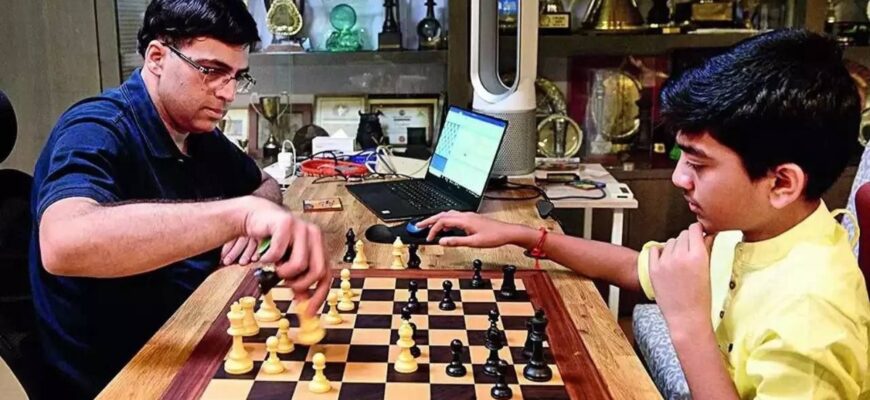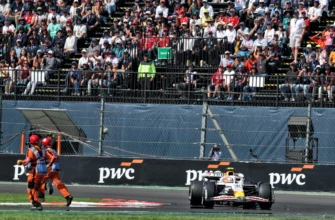For decades, the name Viswanathan Anand resonated as a solitary beacon of Indian brilliance in the elite echelons of global chess. A singular genius, a trailblazer who carved out a path for a nation. Today, however, that singular light has fractured into a dazzling constellation. The whispers from the chess world have grown into a roaring consensus: the era of “Vishy`s children” is not just dawning; it has unequivocally arrived, transforming the landscape of competitive chess in a way few could have predicted.
The Architect and His Grand Apprentices
Anand`s legacy extends far beyond his own trophies. He laid the foundation, but crucially, he also nurtured the soil. His influence as a mentor, a guide, and an inspiration cannot be overstated. From handing out childhood trophies to advising on intricate strategic dilemmas, Anand has been the silent godfather to a generation now making deafening noise on the international stage. It`s a testament to his vision that the world now sees not just one Indian Grandmaster, but a relentless conveyor belt of talent.
A Wave of Unprecedented Victories
The evidence is compelling and recent. Take Gukesh Dommaraju, for instance. A name that, just a few short years ago, might have drawn blank stares from casual observers. Now, following his triumph at the 2024 Candidates tournament and his subsequent, decisive victory over Ding Liren for the World Championship title, Gukesh stands as the youngest undisputed World Champion in history. His ascent wasn`t merely a stroke of luck; it was a defiant march against established hierarchies, a testament to a fearlessness that characterises this new Indian wave. As Garry Kasparov, a man who knows a thing or two about dominating the chess world, aptly put it, “The `children` of Vishy Anand are on the loose!”
And it`s not just the open category. The women`s circuit is witnessing its own seismic shift. Divya Deshmukh`s recent victory at the FIDE Women`s World Cup in Batumi, Georgia, culminating in an all-Indian final against the seasoned Koneru Humpy, was more than just a personal milestone; it was a statement. In a domain long dominated by Chinese players, Divya`s win, which also secured her Grandmaster title, signals a powerful new contender. Her persistence in closing out tough endgames, often against formidable opponents, showcases a grit that is becoming a hallmark of these young players. They don`t just play; they push, they prod, they refuse to settle, even when a draw seems the most logical outcome.
Beyond the Headlines: The Depth of Indian Talent
While Gukesh and Divya capture the headlines, the depth of Indian talent is truly remarkable. The FIDE standard ratings now boast three Indian players in the top 6 of the open category, and four in the top 20 for women. R Praggnanandhaa, Arjun Erigaisi, and Nihal Sarin are not merely supporting acts; they are stars in their own right, each with unique strengths. Praggnanandhaa`s classical prowess, Erigaisi`s formidable performance in faster time controls (as seen at the recent eSports World Cup in Riyadh), and Sarin`s online speed demonstrate a versatile and multi-faceted mastery of the game.
The possibility of an all-Indian World Championship match, once an audacious fantasy, now feels like an inevitable trajectory. The prospect of multiple Indian players gracing future Candidates tournaments is not merely optimistic; it`s a realistic expectation, given the relentless development pipeline.
A New Global Chess Order
What fuels this phenomenon? A blend of accessible online training, a burgeoning domestic chess culture, and perhaps most importantly, the tangible examples set by figures like Anand. These young players have grown up in an era where high-level chess instruction is readily available and where the internet allows for endless practice against diverse opponents. They are not intimidated by reputation or history; they are focused on the moves on the board and the possibilities those moves unlock.
The world of chess is witnessing a profound reordering. The traditional powerhouses are being challenged by a vibrant, energetic, and highly skilled new force from India. This isn`t just about individual success stories; it`s about a nation collectively ascending to the pinnacle of a demanding intellectual sport. As Anand, still actively involved, watches this golden generation exert its dominance, one can almost hear the collective sigh of resignation from their global competitors, mingled with grudging admiration. Chess, it seems, has found a new, expansive home, and it’s painted in the vibrant colours of India.








